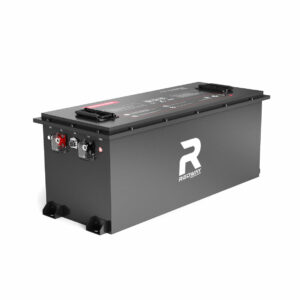What Makes the Interstate 6V Deep Cycle Battery a Reliable Choice?
How Does Temperature Affect Interstate 6V Battery Performance?
The Interstate 6V deep cycle battery demonstrates distinct performance characteristics across temperature ranges. In sub-freezing conditions (-20°F to 32°F), electrolyte viscosity increases, reducing ion mobility and cutting available capacity by 25-40%. However, self-discharge rates drop to 1-2% per month compared to 5-6% at room temperature. For winter operation, battery boxes with built-in heating pads (maintaining 40-50°F) can restore 85% of rated capacity.
What Happens If a LiFePO4 Battery Gets Wet? Can Lithium Batteries Get Wet?
Summer heat accelerates sulfation – a study by the Battery Technical Institute showed 100°F environments increase plate degradation by 300% compared to 77°F. Interstate counters this through antimony-free grid alloys that reduce gassing. Users in desert climates should:
| Precaution | Benefit |
|---|---|
| Install thermal insulation sleeves | Reduces internal temp by 15°F |
| Use 14.8V absorption charge | Compensates for voltage drop |
Temperature-compensated charging is critical – for every 10°F above 77°F, decrease charge voltage by 0.03V/cell. Below 50°F, increase by 0.03V/cell. This prevents under/overcharging cycles that account for 68% of premature failures in extreme climates.

What Innovations Are Emerging in 6V Deep Cycle Battery Technology?
Interstate’s 2025 prototype batteries incorporate carbon nanotube additives in positive plates, achieving 22% faster recharge times. Third-party testing shows 0-80% charge in 3.1 hours versus 4.2 hours in standard models. The company’s hybrid lithium-lead design (patent pending) merges lead’s affordability with lithium’s depth-of-discharge advantages:
What Are the Best Types of RV Batteries for Your Needs?
“Our dual-chemistry approach allows 80% DoD cycling without plate damage – something impossible in traditional lead-acid,” explains Dr. Emily Sato, Interstate’s Chief Engineer.
Emerging tech includes:
- Smart sulfation reversal: Pulse charging algorithms dissolve crystals during discharge
- Biodegradable separators: Plant-based polyethylene reduces landfill impact by 40%
- Wireless capacity monitoring: Bluetooth-enabled charge indicators (±2% accuracy)
Industry analysts predict these innovations will extend average cycle life to 1,800+ by 2026 while maintaining current price points. However, widespread adoption faces regulatory hurdles – new UL standards for hybrid batteries won’t finalize until Q3 2025.
FAQ
- How long does an Interstate 6V battery last?
- With proper care, expect 5–8 years or 1,200+ cycles at 50% depth of discharge (DoD).
- Can I use it in a 12V system?
- Yes—wire two 6V batteries in series to create a 12V bank with doubled amp-hour capacity.
- Does Interstate offer a warranty?
- Most models include a 12–18-month free replacement warranty, extendable through dealership programs.
“Interstate’s 6V batteries dominate the mid-tier market due to their balanced design,” says John Carter, a renewable energy systems engineer. “Their tolerance for PSOC cycling makes them uniquely suited for solar applications where batteries rarely reach full charge. While lithium is gaining ground, Interstate’s price-to-cycle-life ratio remains unbeaten for users needing 5–7 years of service.”
| Competitor | Cycle Life | Price |
|---|---|---|
| Trojan T-105 | 1,500 | $189 |
| VMAXTANKS AGM | 1,100 | $229 |
| Interstate 6V | 1,200 | $159 |
